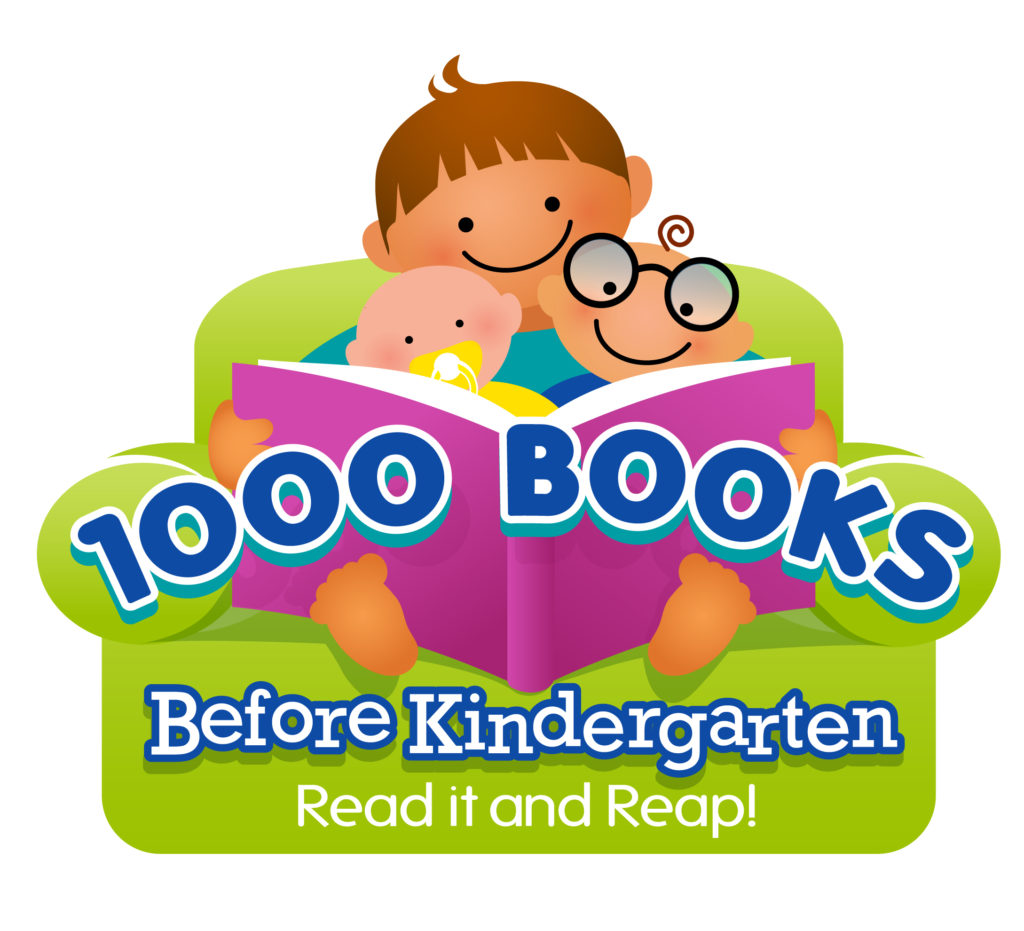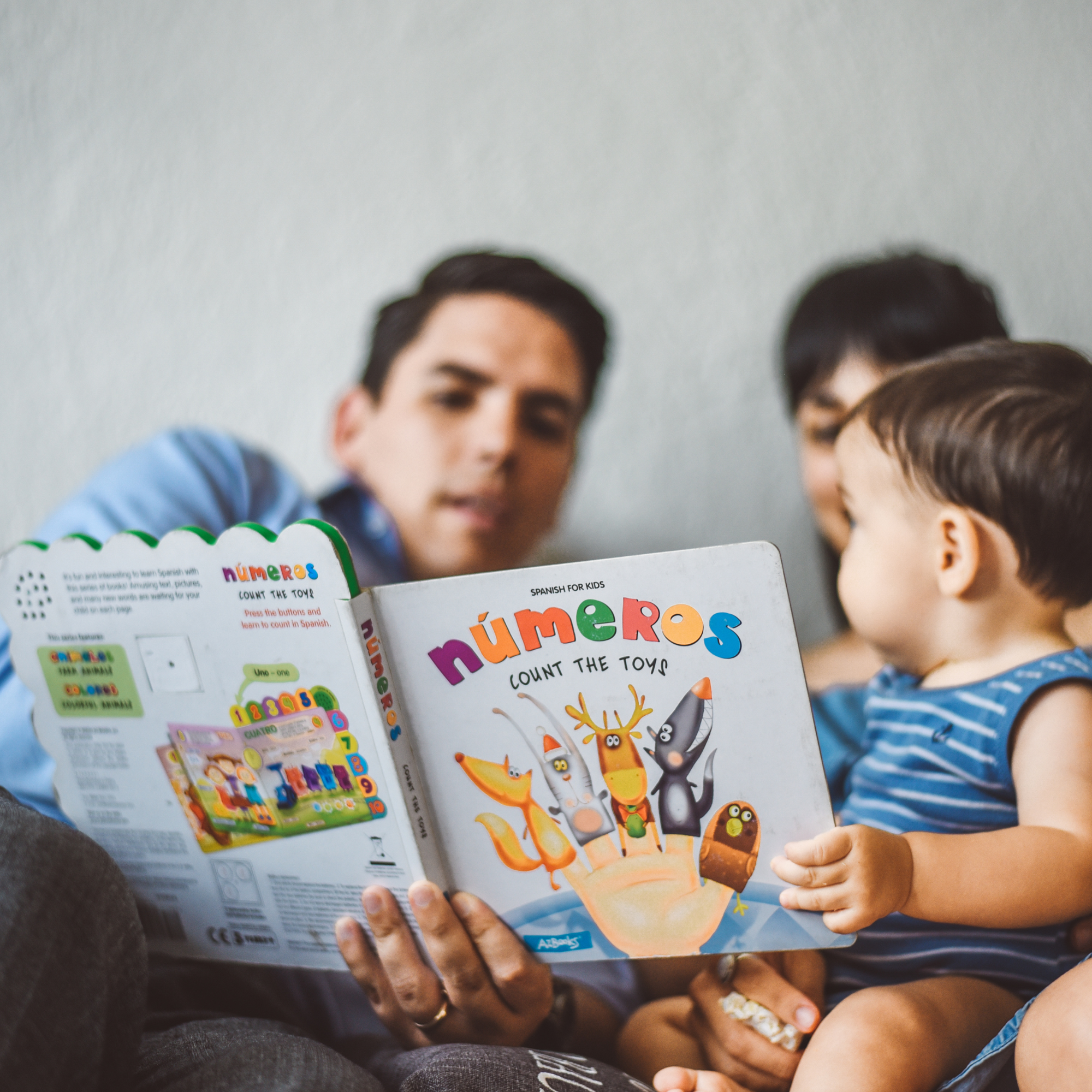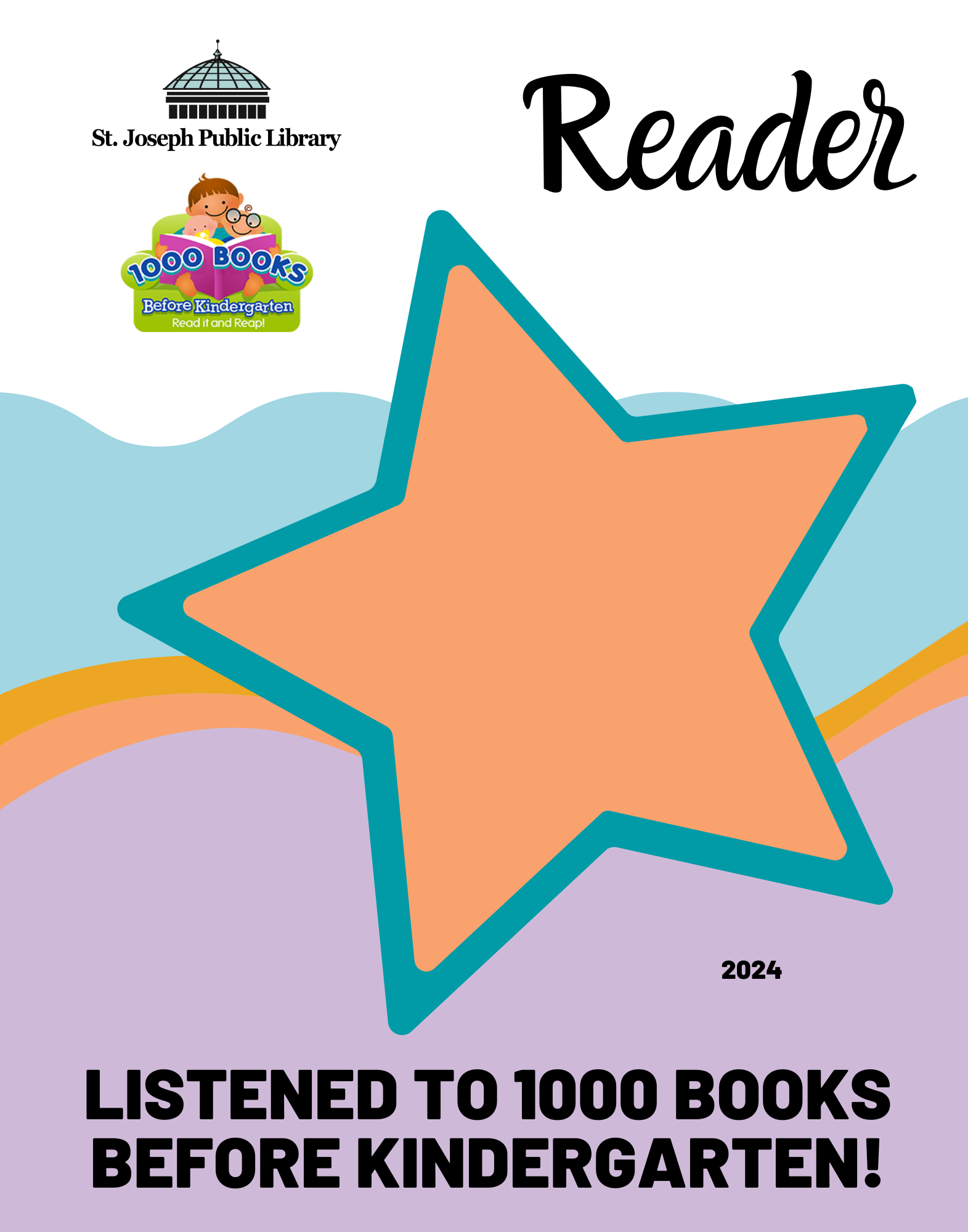 What is the 1,000 Books Before Kindergarten Club?
What is the 1,000 Books Before Kindergarten Club?
It’s a nationwide reading incentive program that encourages parents to read to their kids.
Why should I join?
Reading aloud to children daily from infancy stimulates early brain development and helps build key language, literacy and social skills.
The simple and enjoyable act of sharing books helps your child learn pre-reading skills such as:
- Developing a bigger vocabulary.
- Understanding the sounds that letters make.
- Building background knowledge.
- Reading 1,000 books before kindergarten is a great way to spend time getting your child ready to read and succeed!
How do I join the book club and set my child on the road to reading?
It’s easy. Just pick up your 1,000 Books Before Kindergarten supplies. Supplies consist of a brochure, first log sheet, and suggested reading lists all packaged into a handy folder.
Register your pre-kindergarten child at sjplibrary.beanstack.org and join the 1,000 Books Before Kindergarten challenge. Beanstack allows you to track your reading progress and earn prizes online. You can also track your reading at the library.
Read your first 100 books and bring your log sheet back to the library.
The librarian will take a photo of your child and will add them to our tracking display.
They will also give you your next log sheet and stickers and can help you log your reading in Beanstack.
Prizes are awarded when the child reaches 500 books and 1000 books.
When 1,000 books have been read – and this may take a year or two – your child will be added to the 1000 Books before Before Kindergarten Wall of Fame display at the library where you are participating!
What should I look for when choosing books?

Infants 0-12 months:
• Books with simple, large pictures or designs with bright colors. Images should be of familiar objects, or other babies.
• Small, stiff Cardboard, Board Books made for small hands.
• Washable cloth books to cuddle and mouth & Plastic/Vinyl books for bath time.
Books for Young Toddlers 12-24 months:• Sturdy books they can handle and carry.
• Books with photos of children doing familiar things like sleeping, eating or playing.
• Books with only a few words on each page, with simple rhymes and predictable text.
Books for Toddlers 2-3 years:• Books that tell simple stories.
• Books with rhymes, rhythms, and repetitions they can learn by heart.
• Food, Animals, Vehicles and Bedtime books are favorite subjects.
• Books about saying Hello and Goodbye.
Books 3 to 6 years• Books that tell stories.
• Books about kids who look and live like them, as well as books about kids living in different places.
• Books about counting, ABCs, shapes or sizes.
• Books about making friends and going to school.
Need some titles to get started? Click here for our librarians’ favorites!
What’s the best way to read to my child?
• Find a quiet comfortable spot and sit together. Turn off the TV and cell phone.
• Read the book first yourself so you know what’s going to happen and can pace the story.
• Talk about one or two of the pictures.
• Vary your voice for male and female characters (You don’t have to be Meryl Streep).
• Slow down and speed up your voice depending on the differing tempos of the story. This lets the story come alive.
What are the benefits of reading to my child?
Research shows that children with larger vocabularies are better readers. Knowing many words helps children recognize written words and understand what they mean.
Vocabulary is learned from books more than from normal conversations with adults or other children or from the TV.
Children will gain Narrative & Storytelling skills that will help them better understand what they are reading.
Being able to rhyme and sing will give your child a Phonological Awareness that will help them as they begin to sound out words when learning to read.
By helping your child gain a Letter Awareness, knowing the names and sounds of letters, children learn how to sound out words themselves.
Reading together creates stronger bonds and a shared knowledge of the books.
And most importantly, children who enjoy shared reading time, and see others around them enjoying reading, will WANT to learn how to read.
